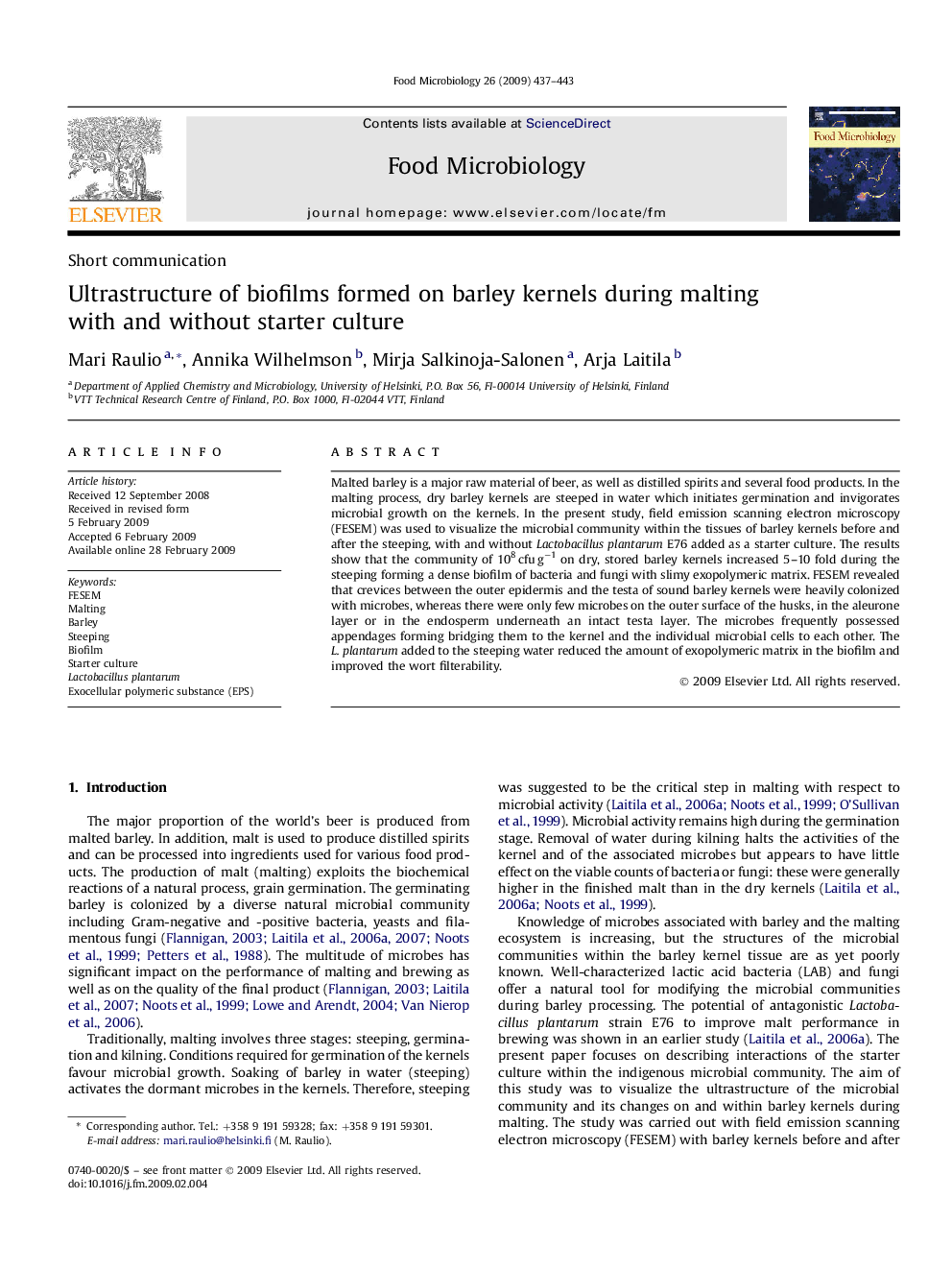| Article ID | Journal | Published Year | Pages | File Type |
|---|---|---|---|---|
| 4363668 | Food Microbiology | 2009 | 7 Pages |
Malted barley is a major raw material of beer, as well as distilled spirits and several food products. In the malting process, dry barley kernels are steeped in water which initiates germination and invigorates microbial growth on the kernels. In the present study, field emission scanning electron microscopy (FESEM) was used to visualize the microbial community within the tissues of barley kernels before and after the steeping, with and without Lactobacillus plantarum E76 added as a starter culture. The results show that the community of 108 cfu g−1 on dry, stored barley kernels increased 5–10 fold during the steeping forming a dense biofilm of bacteria and fungi with slimy exopolymeric matrix. FESEM revealed that crevices between the outer epidermis and the testa of sound barley kernels were heavily colonized with microbes, whereas there were only few microbes on the outer surface of the husks, in the aleurone layer or in the endosperm underneath an intact testa layer. The microbes frequently possessed appendages forming bridging them to the kernel and the individual microbial cells to each other. The L. plantarum added to the steeping water reduced the amount of exopolymeric matrix in the biofilm and improved the wort filterability.
